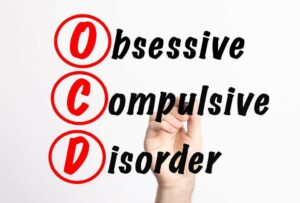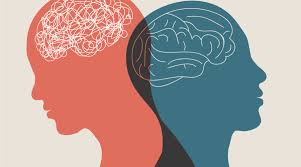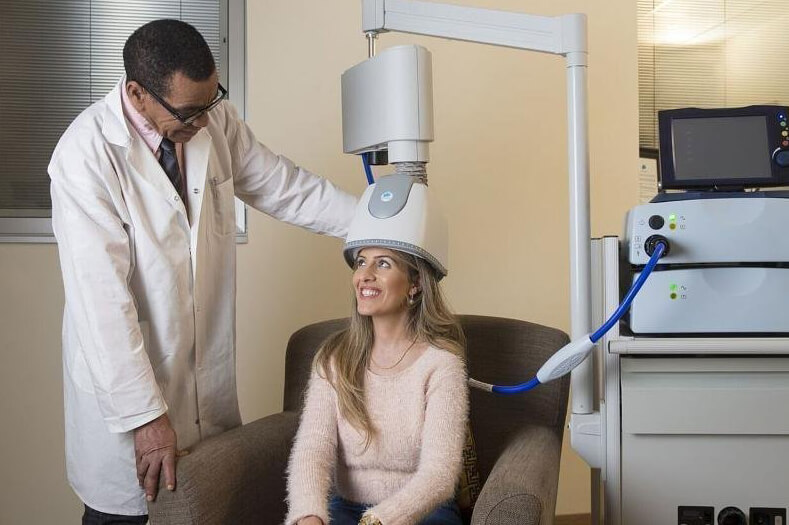Obsessive Compulsive Disorder (OCD) is a mental disorder that affects millions of people in the whole world. It’s one of the most common psychiatric disorders, and it can seriously impact your day-to-day life. In this blog post, we will introduce you to DTMS—a cognitive behavioral therapy for OCD that is effective. We will also provide tips on how you can start and improve your treatment using this technique.
Contents
What Is OCD?

OCD stands for Obsessive Compulsive Disorder. It is a mental disorder that consists of recurrent, intrusive thoughts or images that lead to repetitive, ritualized behaviors. OCD can be extremely disabling and even life-threatening.
There is no one answer to what causes OCD, but there is ample evidence that it is caused by an imbalance in the brain’s chemistry. The exact cause of OCD is still unknown, but scientists believe that it may be related to abnormalities in certain areas of the brain called the basal ganglia.
OCD can affect almost anyone at any age, but it tends to occur most often in people between the ages of 18 and 35. There are also variations in prevalence based on gender and ethnicity. For example, OCD appears to be more common in women than men, and it affects African Americans more than whites.
What is Deep Transcranial Magnetic Stimulation?
Deep Transcranial Magnetic Stimulation (DTMS) is a neurotherapeutic technique that uses strong magnetic fields to stimulate specific areas of the brain. It has been used for years to treat conditions such as depression, epilepsy, and chronic pain. Recent studies have shown that DTMS can also be effectively used to treat obsessive-compulsive disorder (OCD).
The procedure for using DTMS for OCD involves using an MRI machine to create an image of the patient’s brain. Next, a magnet is attached to the head of the patient while they are in a stationary position. The machine then sends powerful magnetic fields into the brain, which are believed to stimulate specific areas associated with OCD symptoms. The treatment usually lasts around 20 minutes and is generally safe, though there may be some mild side effects such as headaches or soreness in the neck.
How Does Deep Transcranial Magnetic Stimulation Work For OCD?
Deep transcranial magnetic stimulation (DTMS) is a non-invasive, effective treatment for obsessive-compulsive disorder (OCD). It works by activating the prefrontal cortex, which is responsible for cognitive functions like planning and problem-solving.
- DTMS is delivered through a magnetic coil placed on the scalp. The coil sends a current through the brain, which increases blood flow and activity in specific areas. This can help to improve symptoms of OCD, including obsessions and compulsions.
- This treatment works by the stimulation of the prefrontal cortex, which helps to regulate emotions and improve cognitive function. It also works by reducing anxiety and other symptoms associated with OCD.
- The effects of DTMS may be seen within weeks or months of starting treatment, although it is important to continue treatment for several months to maintain its positive effects.
- Several studies have shown the effectiveness of DTMS in treating OCD. One study found that 70% of participants who received DTMS were symptom-free after eight weeks. Another study found that 67% of patients who received DTMS were free from all clinically significant OCD symptoms after eight weeks.
- DTMS may be a viable option for people who do not respond to traditional treatment options for OCD, such as medication and cognitive behavioral therapy. It is also an option for people who have had unsuccessful treatment with other types of treatments, such as electroconvulsive therapy (ECT).
How to Use DTMS for OCD?

DTMS is a type of behavioral therapy that is used to help people with OCD. It is a kind of “talk therapy” that helps people learn to control their thoughts and behaviors.
DTMS works by gradually increasing the number of treatment sessions that you attend over time. The goal is to help you learn how to deal with your obsessions and compulsions on your own.
· Look for a program that has a long-term commitment from the therapist. Some programs offer monthly treatments, while others offer six-to-eight-week treatment sessions. Make sure the therapist has experience working with OCD patients and has a plan for helping you reach your individual goals.
· Consider the intensity level of the program. Some programs are more intensive than others, but all aim to provide gradual improvements in your anxiety levels.
· Ask about potential side effects before enrolling in a program. Every person’s experience with DTMS will be different, so it’s important to find out about any potential side effects or problems that may occur during treatment. Also, ask about the therapist’s plan for dealing with any side effects that may arise.
· Look for a program that offers follow-up care. Just like with any other type of therapy, you need to have someone to whom you can turn if you have questions or concerns after the program is over. This will help ensure long-term success.
DTMS can be a great treatment option for those suffering from OCD. With the right program and therapist, you can learn to manage your OCD symptoms and live a healthier life. Talk to your doctor or mental health professional about DTMS today.
Benefits of DTMS For OCD
The benefits of DTMS for OCD are numerous. It is an effective treatment that has been proven to help reduce symptoms of OCD, including compulsions and obsessions.
Improve Cognition Function
One of the greatest benefits of DTMS is that it helps to improve cognitive function. The stimulation of the prefrontal cortex through this treatment helps to regulate emotions and improve brain activity, allowing you to better manage your thoughts and behaviors
Help To Break The Cycle Of Compulsions
DTMS can also help break the cycle of compulsions. This treatment helps to disrupt the pattern of obsessive and compulsive behaviors, allowing you to gain more control over your thoughts and behavior.
Reduce Anxiety
One of the main goals of DTMS is to reduce anxiety associated with OCD symptoms. This can be a great relief for those who suffer from OCD-related anxiety, as it can help them feel more in control and less overwhelmed by their obsessions and compulsions.
Long Term Results
Another benefit of DTMS is that it has been shown to provide long-term results when used in conjunction with other treatments such as cognitive behavioral therapy (CBT) or medication. Studies have found that 70% of OCD patients who use DTMS in combination with other treatments show improvement in their symptoms after eight weeks. This is a much higher success rate than with traditional treatments alone.
Make sure to talk to your doctor or mental health professional if you’re considering using DTMS as part of your OCD treatment. They can help recommend the right program for you and provide advice on how to get the most out of your treatment sessions.
Negative Impacts of DTMS on OCD

There are many potential negative impacts associated with DTMS for OCD, including:
1. Cost: Treatment with Deep Transcranial Magnetic Stimulation (DTMS) is expensive, and not all insurance providers cover the cost of treatment. Additionally, if the patient does not respond to the initial sessions, additional expenses will be incurred to continue the treatment.
2. Risk of Side Effects: In addition to the cost, there is also a risk associated with DTMS that can lead to adverse effects such as headaches, dizziness, and anxiety. It is important to discuss any potential risks with your doctor before beginning treatment.
3. Not Effective for Everyone: Although DTMS has been proven to be effective in reducing OCD symptoms, it is not 100% effective. Some patients do not respond well to the treatment and may need to explore other treatments or lifestyle changes.
4. Time Commitment: DTMS requires a significant time commitment for both the patient and their doctor. Patients must attend multiple sessions over several weeks, and the doctor must monitor progress throughout.
5. Social Isolation: Some people with OCD may experience a higher level of social isolation due to their disorder. Although DTMS can help reduce symptoms, it does not address the underlying causes of the condition. Therefore, patients may still feel isolated despite treatment.
Conclusion
For more information and guidance, please contact OCDMantra. OCD is a mental health disorder characterized by obsessions and compulsions. If you have any queries regarding OCD treatment, ERP therapy experienced therapists at OCDMantra can help: Book a trial OCD therapy session


